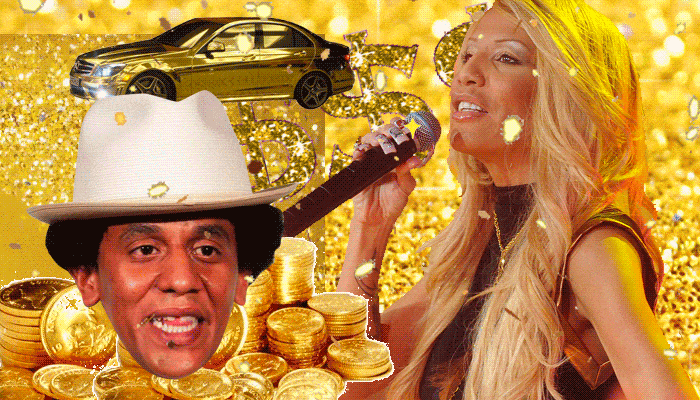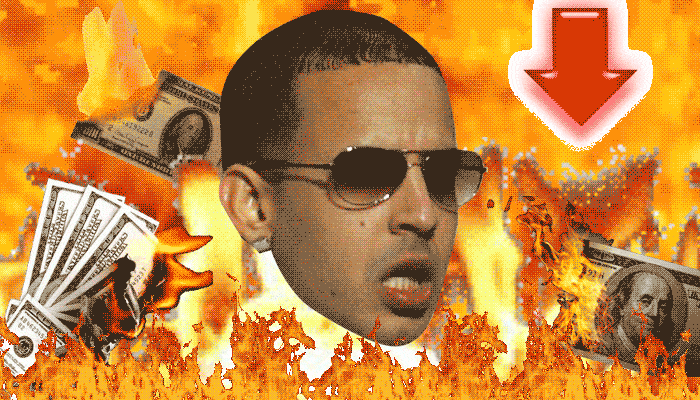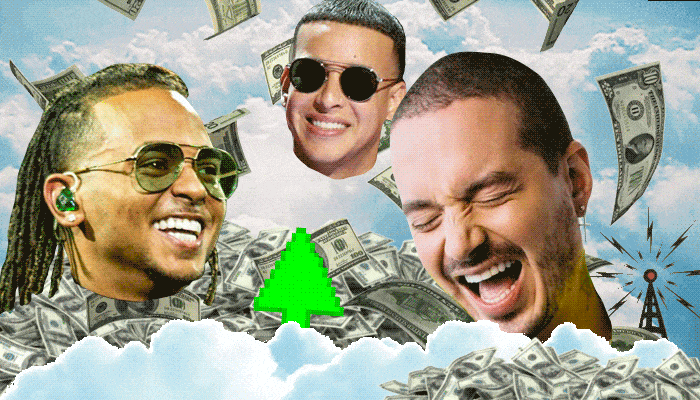Reggaeton began organically as a transformation of dancehall, hip-hop, and reggae en español. As an afro-diasporic movement, Panama, Puerto Rico, Jamaica, the Dominican Republic, and New York are all pivotal landscapes in the style’s musical evolution. Through Tu Pum Pum: The Story of Reggaeton, a column by Eduardo Cepeda, we’ll explore reggaeton’s history, sociopolitical struggles, and its impact as a global force in music and culture.
In 2007, reggaeton was in the middle of what may now seem like an exaggerated lean period. Back then, many publications stumbled over themselves to declare the genre all but dead. Radio stations that made the hasty jump to the “Hurban” format (a clunky and imprecise term for “Hispanic urbano”) just two years earlier were reversing course and moving back towards pop. Mainstream media sounded reggaeton’s death rattle, and all too many were happy to believe perreo’s moment ended unceremoniously.
Of course, it’s no secret that the entire record industry suffered a dip in sales during the late 2000s, mostly because of the advent of streaming. And Latino music in particular seemed to decline at a faster rate. According to Billboard, in 2008, sales of Latino albums fell at a rate 14.4 percent higher than the overall decline in sales, though the higher figure was attributed to what Billboard described as a “still-embryonic digital market for Latin music,” and not necessarily a reversal of reggaeton’s popularity.

In fact, the acts who did stick around, like Wisin y Yandel, Daddy Yankee, and Don Omar, actually saw their audiences grow during that period. Yankee’s 2007 album El Cartel: Big Boss sold 82,000 copies in its first week, which was a record for a reggaeton album at the time. Wisin y Yandel’s 2009 album La Revolución debuted at no. 7 on the Billboard 200 – no small feat for an allegedly dead genre. The reality is that the demand for reggaeton wasn’t necessarily gone; there just wasn’t enough of it with major label distribution to keep the momentum up after its initial surge.
The facts didn’t stop the hype machine from sensationalizing the alleged demise of reggaeton. In much of the mainstream media coverage, there was a newfound hostility and resistance that the genre hadn’t faced since the Mano Dura era. Some major publications, like XXL ,even published vitriolic and prejudiced op-eds calling for a wall to keep “Hispanics” and their music out of the country. Any valid argument the writer could have made about reggaeton’s decline went completely out the window when he alleged that literally “nobody” liked Daddy Yankee’s “Rompe,” which is arguably the song of the millennium. Don’t @ me.
But the hype continued, and labels panicked. There was a groundswell in reggaeton obituaries, complete with hyperbolic headlines like “The Death of Reggaeton,” or “When the Fad Goes Fizzle.” And with data that proved marketing departments weren’t doing their jobs to lead listeners towards streaming, labels put the emergency brakes on new reggaeton signees. Lacking new artists with major label backing, reggaeton’s market share continued to plummet.

The good thing for reggaeton – and for music in general – is that streaming did eventually pick up, and led the genre down a path to total domination. And though many erroneously cite “Despacito” as the defining moment that reggaeton returned, it was just one of many songs that consecutively broke streaming records while redefining how the genre was consumed.
“Despacito” was just one of many songs that redefined how reggaeton was consumed.
Aided in large part by its outstanding global YouTube performance, Don Omar’s “Danza Kuduro” (while not technically a reggaeton song) introduced new international audiences to a reggaeton artist who’d traditionally performed dembow-driven tracks. Don Omar’s profile grew and he took reggaeton with him. And just a few years later, a Spanish pop star took a dembow-cradled ballad about dancing and paved a path for the current reggaeton resurgence.
When Enrique Iglesias first heard the demo for “Bailando,” a song he and longtime collaborator Descemer Bueno wrote, he wasn’t a fan. But after hearing the recorded version by Cuban reggaeton duo Gente de Zona, even he knew the saccharine take on reggaeton was a hit. The song peaked at no. 12 on the U.S. Billboard Hot 100, charted in over 30 countries, and is now the 11th most-viewed YouTube video of all time, with an impressive 2.6 billion hits.

In many ways, “Bailando” was a direct antecedent to “Despacito.” Its foundation of Latin pop, layered over a dembow-lite riddim, helped set a precedent for the inescapable Luis Fonsi and Daddy Yankee anthem that followed. It signaled the rise of a transformed version of reggaeton that was palatable to an even larger audience, and with it, came more of reggaeton’s “blanqueamiento.” Despite the costly cultural consequences of allowing a pop song to define a movement, there’s no denying it ushered in a new era for the genre, and carved a path for the popularity we’re seeing today.
Reggaeton will adapt to keep surviving – no matter the media zeitgeist at the moment.
But will it persevere? As we’ve seen in the last few years, reggaeton clearly dominates globally. With Ozuna and J Balvin commanding the two most-watched YouTube positions in the world, and Bad Bunny’s collaboration with Drake summiting the charts, it’s easy to see how streaming has continued to propel the genre after its brief commercial slump.
But with artists like Bad Bunny and El Alfa infusing their albums with trap, dembow, and even pop punk cuts, reggaeton’s future could lie in genre fluidity. The freedom for artists to weave in and out of different sounds – much like Bad Bunny did on X 100PRE – gives reggaeton, and urbano as a whole, new life. Streaming took what was considered a dead genre by many, and catapulted it to mainstream heights. Moving forward, reggaeton’s staying power lies in a collective effort by artists to draw inspiration freely from all of the sounds in música urbana’s well.
Just like the audiences who gradually learned to tap into streaming, reggaeton too will adapt to keep surviving – no matter the media zeitgeist at the moment.
Stream a playlist with reggaeton and urbano hits from 2008-2014, curated by Remezcla staff.







